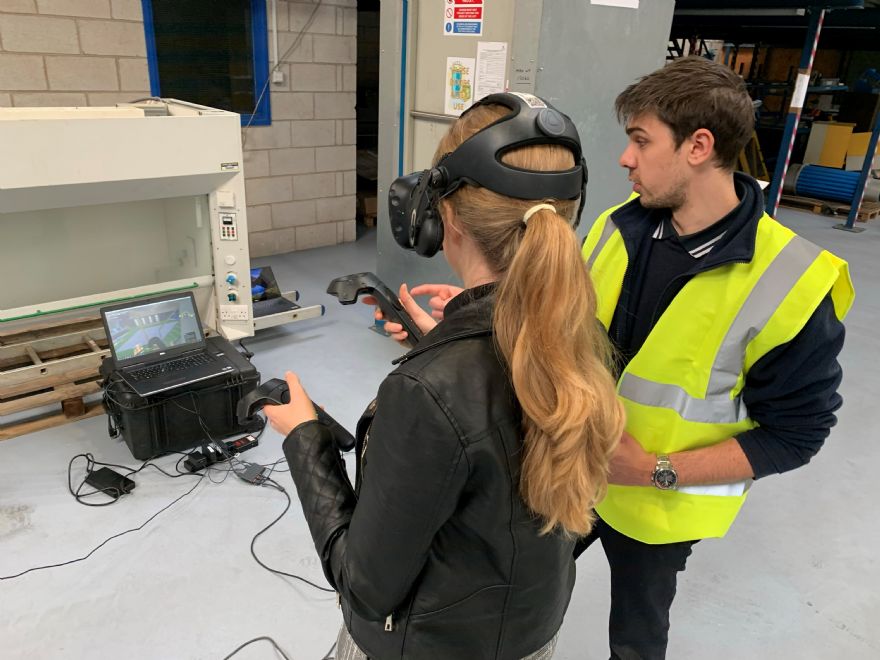
A multi-disciplined specialist engineering business embraced virtual reality (VR) technology to design the layout of its new Electroless Nickel Plating facility, part of a complex manufacturing portfolio thanks to digital support from engineers at the
University of Sheffield Advanced Manufacturing Research Centre (AMRC).
NiTEC UK of Chesterfield are a division of
CBE+ specialising in electroless nickel plating, a chemical process that deposits an even layer of nickel-phosphorus alloy on the surface of a solid substrate — typically used to improve corrosion protection, hardness or wear resistance for an infinite array of applications, from subsea to space and medical to defence.
The business approached the AMRC for help designing the physical layout of its operations and to optimise a complex range of production processes.
Chris Brown, CBE+ group technical director, said: “The AMRC supported us to create and navigate around a new space using VR. It is a useful way to do it — as you can imagine, if you had to start pouring concrete in the ground and building the new layout in order to test it, the whole thing would be cost prohibitive.”
The AMRC, as part of the High Value Manufacturing (HVM) Catapult, supports businesses to explore technology they would not otherwise have access to. The project was paid for using funds from the HVM Catapult as part of a commitment to working with small- and medium-size enterprises.
Dr Phil Yates, AMRC project manager, said: “The markets and the complexity of what they make has grown enormously at NiTec. They now manufacture products for several different sectors from performance automotive to the military.
“To optimise their complex range of processes, we first mapped out the various products into families, grouping these together to explore options for the layout, as well as the chemistry of their production. We analysed a range of data and used a virtual reality simulation to come up with the optimal solution — this was not just about their shop floor, this project looked at rationalising every element of their manufacturing processes.”
Chris Brown added: “This work has ended up going in a new direction, after a pause due to Covid-19, and we’re now looking at bringing in robotics to achieve the outcomes we want to see. Our work with the AMRC helped us identify the best way forward for our business, in a relatively cost-effective way.
“The outcome hasn’t been what we necessarily expected at the outset, but that is part of the reason it is useful to work with an organisation like the AMRC — to explore what is possible.”